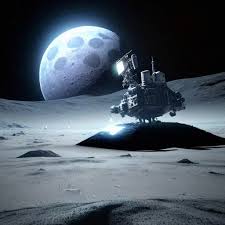Chandrayaan-3: Celebrating India’s Historic Lunar Success and Upcoming Revelations**

File Picture
India has once again captivated the world with its impressive strides in space exploration. August 23, 2024, marks the first anniversary of India’s successful Chandrayaan-3 mission, which made the nation the first to land near the Moon’s South Pole. This achievement not only solidified India’s status as a formidable player in space exploration but also opened new avenues for scientific discovery.
The Indian Space Research Organisation (ISRO) has designated this day as National Space Day to commemorate the mission’s success. On this day, ISRO will unveil the findings from the Chandrayaan-3 mission, highlighting the scientific contributions it has made in our understanding of the Moon.
### Chandrayaan-3’s Key Discoveries
During its mission, Chandrayaan-3’s Vikram lander and Pragyan rover conducted several groundbreaking experiments. Among the most notable findings was the drastic temperature variation observed near the Moon’s South Pole. The Surface Thermophysical Experiment (ChaSTE) revealed that temperatures on the surface reached 50°C, but just 10 centimeters below, they dropped sharply to -10°C. This stark contrast in temperature within a small depth underscores the extreme conditions on the Moon.
Another significant discovery was the detection of a “moonquake” by the Instrument for Lunar Seismic Activity (ILSA). This is the first such detection by a MEMS-based instrument on the lunar surface, providing valuable insights into the Moon’s seismic activity. Additionally, the Laser-Induced Breakdown Spectroscopy (LIBS) instrument on the Pragyan rover made the first in-situ measurements of the elemental composition of the lunar surface, confirming the presence of sulfur, among other elements. These findings are expected to provide crucial data for future lunar exploration missions.
### The Significance of Chandrayaan-3
Chandrayaan-3’s successful landing and subsequent discoveries have far-reaching implications. By exploring the Moon’s South Pole, a region rich in water ice, ISRO has paved the way for future missions that could potentially harness these resources for sustained lunar exploration. The mission has also demonstrated India’s growing technological capabilities, furthering its ambitions in space exploration.
As ISRO prepares to reveal more detailed findings from the mission, the nation and the world eagerly await the next chapter in India’s space journey. The Chandrayaan-3 mission stands as a testament to India’s scientific prowess and a beacon of inspiration for future explorations.
This milestone comes at a time when India is rapidly advancing its space capabilities, aiming to establish itself as a global leader in the space sector. As we celebrate National Space Day, the success of Chandrayaan-3 serves as a reminder of the endless possibilities that lie ahead in humanity’s quest to explore the cosmos.